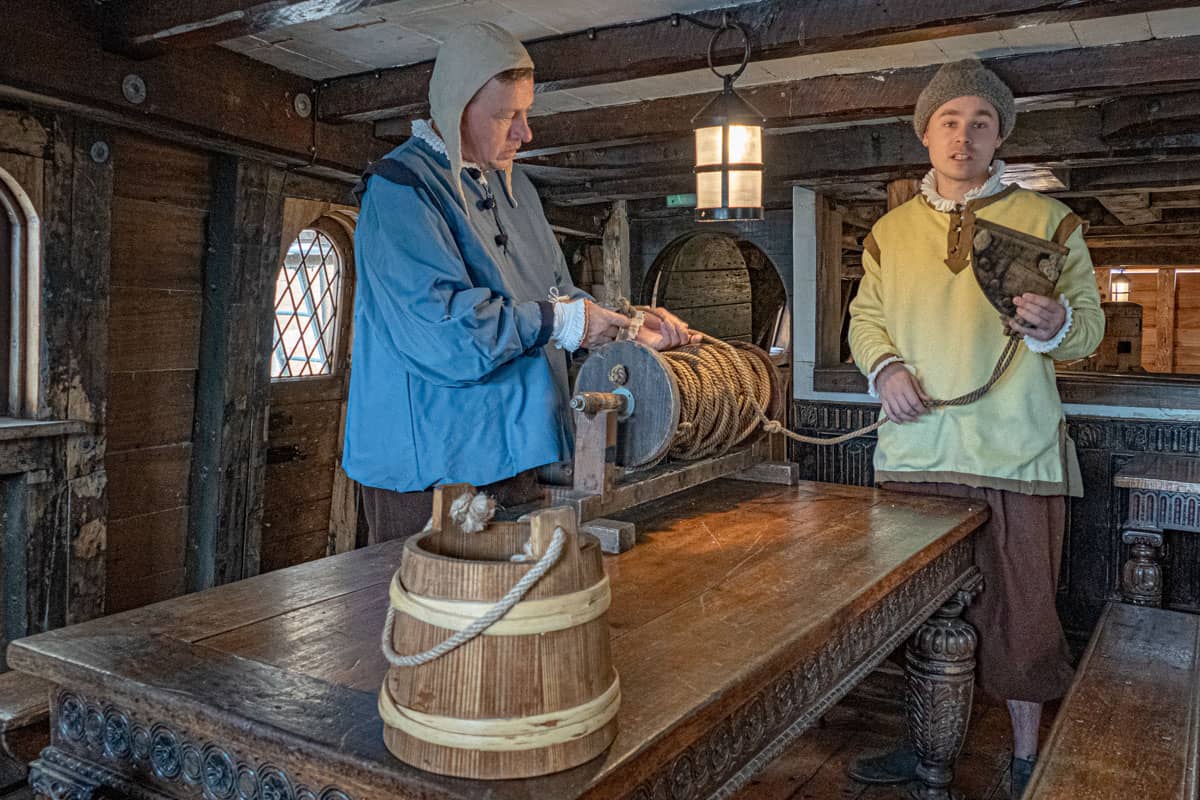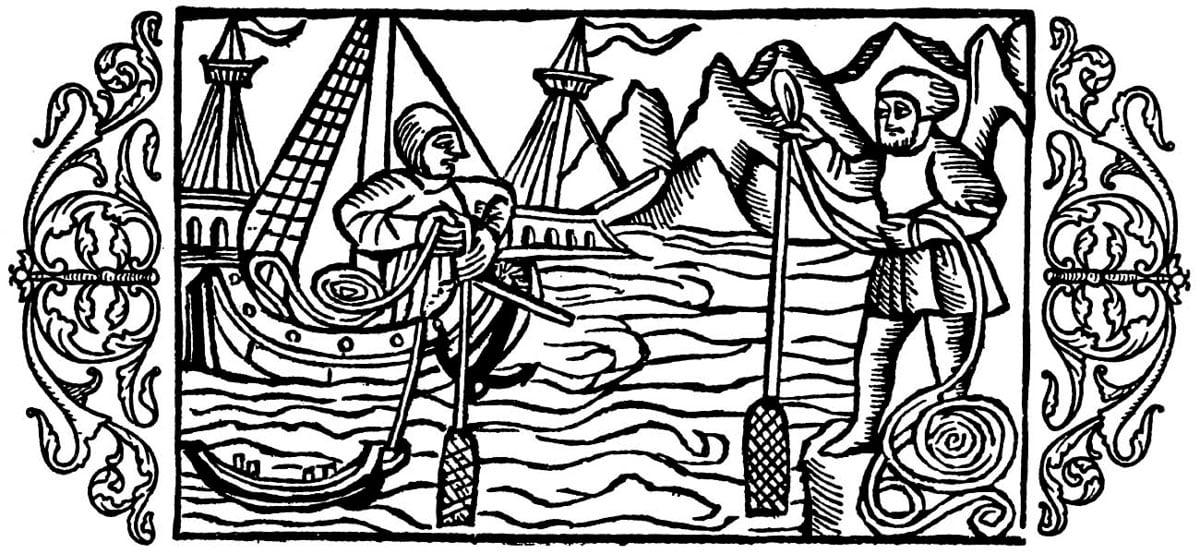Meet the Crew: the Pilot
It’s time to Meet the Crew: our series of blogs where we introduce you to members of the crew of an Elizabethan galleon. Next up, the Pilot…
A pilot was brought aboard a ship to be in charge of its route for a particular leg of the journey. They were employed for their excellent local knowledge and would have been expected to navigate the ship through dangerous coastal waters and in and out of harbours.
Pilots would often take the helm and steer the ship. In fact, the word ‘Pilot’ comes from the Greek pedotes, meaning rudder, or helmsman. Pilots were skilled seamen who could expect to earn considerably more than the common mariner.
In the Elizabethan period, pilotage and navigation was becoming increasingly technical and required a decent knowledge of mathematics. Navigation schools had sprung up in port cities across Europe to teach mariners the principles of trigonometry, geometry, and cosmology. Many mariners were suspicious of these new techniques and mistrustful of those who had learned through textbooks. They felt that the best way to learn was on the job.
 |
In many countries in 16th century Europe, pilots had to pass an exam to make sure they were up to scratch. In Spain, for example, all pilots and navigators had their skills and knowledge assessed by a very experienced mariner known as the ‘pilot-major’.
English pilots were not regulated in this way, and the quality of the training and assessment of apprentice pilots was in the hands of their master. There were a number of attempts to create a national examination and certification system similar to Spain, but none were successful. Elizabeth I seemed to want to keep state interference in the training of mariners to an absolute minimum.
One of the principal tools of a pilot’s trade was a ‘lead line’: a long rope with markers at regular intervals and a heavy lead weight seized to one end. A pilot could use the lead line to measure the depth of the water by throwing the led overboard and using the markers as reference. This was important because if the water was too shallow, the ship might run aground and get stuck. Changing water depths might allowed the pilot to recognise where they were along a coastline.
 |
Sheep’s fat, or ‘tallow’, was often stuck to the bottom of the lead. This sticky substance would bring up some of the material on sea floor when the line was raised, providing the pilot with even more information.
During his circumnavigation, Drake attacked and plundered a Portuguese ship near the Cape Verde islands. He captured the ship’s pilot, a man called Nuño de Silva, and brought him aboard. Nuño de Silva had good knowledge of the waters around South America and would prove to be a valuable pilot.
After he went ashore, Nuño da Silva was questioned by the Spanish Inquisition about his time with Drake. His story is an incredibly useful source for historians.
 |

